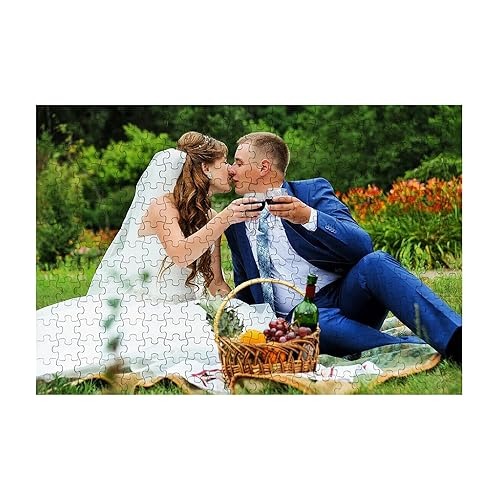Not all puzzles are built the same. Some fall apart after one use. Others hold their shape, feel solid, and stay in good condition even after multiple completions. Choosing the correct puzzle means looking at more than the image on the box. You need to know what to check for, especially if you want something that lasts. This is important for people who puzzle often and want to get the most out of each one.
Look at the material
The first sign of a puzzle’s quality is the material. Cardboard is standard, but the thickness and strength vary. Thin cardboard bends easily and frays at the edges, while thicker boards stay firm, even when picked up or moved during assembly.
Wooden puzzles offer more strength. They don’t warp and can hold their shape better over time. They’re often heavier, which helps pieces stay in place. Many puzzlers prefer wooden styles because they feel sturdier in hand.
If you’re looking for quality puzzles, start by checking the type of material used. Strong, dense wood is always better than thin, soft cardboard.
Examine the cut style
The way the pieces are cut affects how well they fit. Poorly cut puzzles have loose or uneven edges, which can cause them to shift during use or not connect properly, and it can also lead to damaged pieces.
Die-cut puzzles are common. These use a template to press shapes out of the board. If not maintained, this method can produce dull cuts over time. High-quality brands use sharp, clean templates that create precise edges.
Laser-cut puzzles use a different method. A laser burns through wood to make sharp, clean lines. These offer tight fits and interesting piece shapes. They also last longer because they reduce edge wear.
Fit is critical in puzzles for adults, where the challenge is often higher, and the solving process is more focused.
Pay attention to image quality
Blurry or low-resolution images can ruin the puzzling experience. The print should be clear, with sharp details and accurate colors. Poor printing may confuse puzzlers, especially in complex scenes.
A high-quality puzzle uses detailed printing, high-quality ink, and a strong adhesive to keep the image on the board. It also resists peeling or fading.
Glossy finishes can reflect light and make pieces hard to see. Matte or velvet finishes are easier on the eyes and reduce glare. Look for puzzles that match your preferred style.
Check for dust and loose pieces
When you open a puzzle, there shouldn’t be piles of dust. Excess dust means the pieces weren’t properly finished after cutting. It can also cause pieces to fit less cleanly.
Loose or warped pieces are another red flag. They make the puzzle harder to assemble and more likely to wear out quickly.
A clean box with neat, secure pieces usually means the maker took time to do things right.
Consider the puzzle design
Design goes beyond the image. Good puzzles are built to make the solving process interesting and smooth. The piece shapes should vary enough to challenge you, but not so much that they become random.
Some puzzles have a clear grid pattern. Others use creative interlocks, shapes, or even themed figures. These small details make a big difference in enjoyment.
Many puzzles for adults include larger piece counts, smaller individual pieces, and more complex scenes. These require a strong design to stay fun rather than frustrating.
Watch out for packaging details
The box design might seem small, but it affects storage and usability. A sturdy box protects the puzzle when it’s not in use. A good box also includes a reference image large enough to work comfortably from.
Some puzzles even include resealable bags or inner trays for sorting. These features show that the brand understands what puzzlers value.
Well-designed packaging is often a sign of a brand that makes quality puzzles from start to finish.
Stick with trusted brands
Some brands have built reputations for offering puzzles that last. These companies pay attention to material, cut quality, packaging, and image selection.
Frequent puzzlers often share their favorite brands online. You can check reviews, puzzle forums, or community posts for real feedback. Consistent positive comments are a strong sign of reliability.
Final thoughts
Picking the right puzzle isn’t only about the picture. It’s about how it feels, how long it lasts, and how well it holds your attention. The best puzzles combine good design, clean cuts, strong materials, and clear images.
People who solve puzzles often want more than just entertainment. They want something built well, with details that improve the whole experience. The right puzzle can keep you focused, relaxed, and challenged. It’s worth taking the time to choose one that does all three.
 :
https://www.pinterest.com/mosaicpuzzles/
:
https://www.pinterest.com/mosaicpuzzles/

